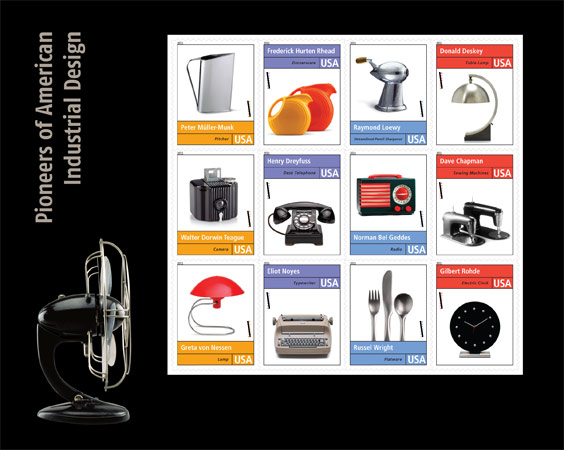This is a time of transition for the mailing industry in general, and the USPS is looking at ways to adapt to the new business environment. One of the changes the postal service is considering is a vaguely defined concept known as Seamless Acceptance.
Seamless Acceptance is basically a simplified mail-entry process in which the pieces do not have to be physically verified by a bulk mail entry clerk. Instead, compliance will be measured during processing via the information contained in the Intelligent Mail Barcode. After the presorted mail has gone out, the USPS will send a report card of sorts to the mailer, detailing the level of compliance. Mailers who fail too often to meet postal standards may be charged for lost discounts after the fact.
Personally, I think this could be a good thing for mailers. Entering the mail can be a time-consuming process for both the mailer and the postal service, and streamlining that process could offer several efficiency benefits for both parties.
However, as a mailer, it strikes me that the mail-entry process is also an important component of my company’s relationship with the USPS. While we have good working relationships with postal employees at several levels within the organization, it’s the bulk mail entry clerks whom we see most often. These are the people we interact with regularly, and it is often through them that we first learn of proposed changes and other information relevant to our business. And I am concerned that a stripped-down entry process may be detrimental to those relationships. Seeing an entry clerk on a daily basis builds a relationship through regular face-to-face interaction and creates a personal connection. This connection is beneficial to both the mail shop and the postal service. The entry clerks are regularly exposed to the concerns of their mailers, and the mailers are offered an opportunity to better understand the postal regulations with which they must comply.
That kind of personal interaction will decline if mailers are only required to leave their mail on the dock. I understand that for some larger mailers, the benefits of convenience and speed may be significant, which is why I don’t oppose the idea of Seamless Acceptance in general. However, for some smaller mailers it may be more beneficial to continue physical verification, and maintain the relationships that grow from it.
Related Posts:
This summer, the USPS released its Pioneers of American Industrial Design commemorative stamps. The set celebrates American designers who have made a lasting impact on the look of the world we inhabit.
That look, straight from the middle of the 20th Century, is seeping back into vogue now. Midcentury is all over television, with shows like “Mad Men” and “The Hours,” as well as the upcoming “Pan Am” and “The Playboy Club.” Couches are getting lower and ties are getting narrower. So it shouldn’t be surprising that a series of stamps featuring iconic products from that era is being released now.
In an interesting turn of events, the stamps were designed under the art direction of Derry Noyes, son of Eliot Noyes, who designed the IBM Selectric typewriter pictured in one of the stamps.
But it’s Raymond Leowy who is my personal favorite of the designers honored by the series. Leowy’s streamlined pencil sharpener depicted in the stamps may not be the most compelling object in the collection, but this is the guy who designed the Coca-Cola bottle, the Lucky Strike pack, and the Studebaker Avanti.
And yet, there are so many other industrial designers from the era who didn’t make the cut that I can’t help but hope that the series is expanded in the future. I’d love to see one of Ray Kappe’s prefab housing designs or an Eames Lounge Chair on a stamp too.
So much of what we have today is manufactured. Industrial design has really become the only kind of design with which most of us are familiar. The Pioneers of American Industrial Design collection is a peek into the field’s past innovations, as well as an invitation to learn more about them.
Raymond Loewy licensed by CMG Worldwide, Indianapolis, Indiana.
KODAK and its trademarks owned by Kodak.
IBM and its trademarks licensed by IBM Corp.
Russel Wright® Russel Wright Studios LLC.
Fiesta® Dinnerware is a trademark owned by The Homer Laughlin China Company.
Related Posts:
The USPS's new Every Door Direct Mail is generating a lot of interest and excitement from small businesses in our area and beyond. We've attended some of the seminars the Postal Service has put together to explain the program to the community, and have seen first-hand the enthusiastic response. Perhaps even more encouraging, we think EDDM may draw people to direct mail who otherwise would not consider it a practical option.
EDDM is a new category of mail that is simpler and more affordable to send than traditional bulk mail, because it eliminates the need for a mailing list and individually addressed mail pieces. The cost of postage and less complicated mailing process of EDDM are most often credited for attracting new customers, however the fact that the USPS is aggressively marketing the new program, and to the audience most likely to be interested, doesn't seem to be hurting. In essence, by targeting the businesses most likely to benefit from the new program with direct mail pieces inviting them to EDDM seminars, the Postal Service is making use of the same mailing benefits it extols to its customers.
While small businesses are expected to be the core users of EDDM, one story has already emerged about someone who's found another use for the program. Randi Slocum of Stillwater, NY, used an Every Door Direct mailing to find her missing dog. Slocum's mother suggested the technique because it was a cost-effective way to get their message to every home in the area.


